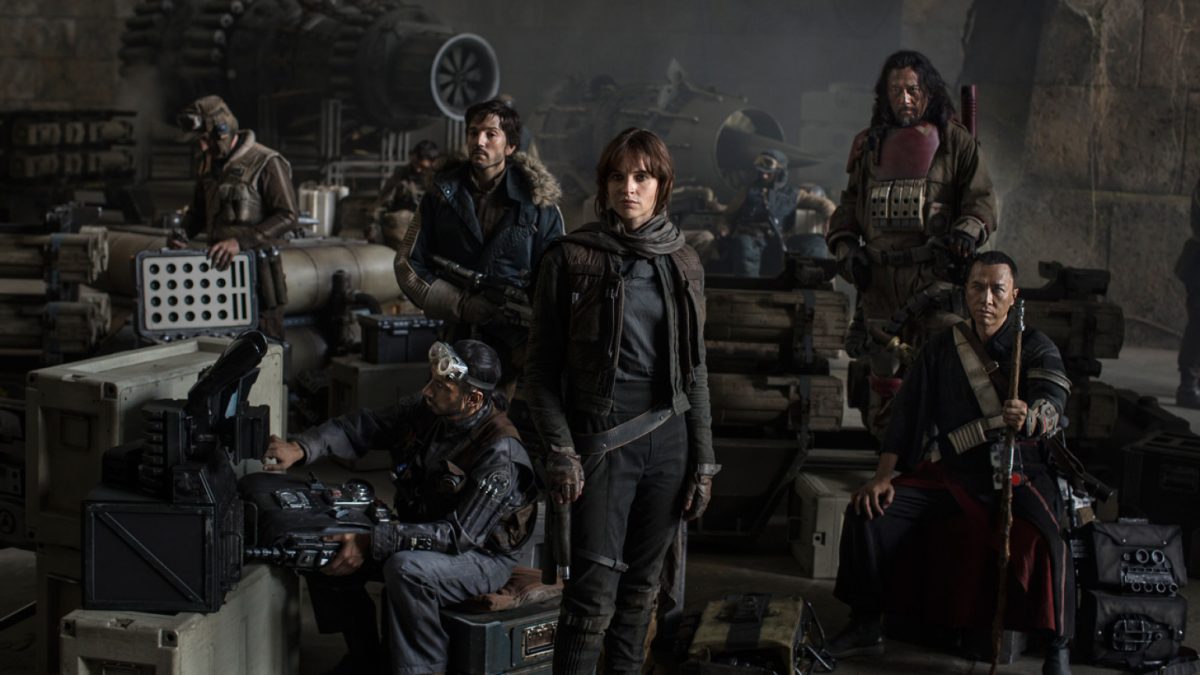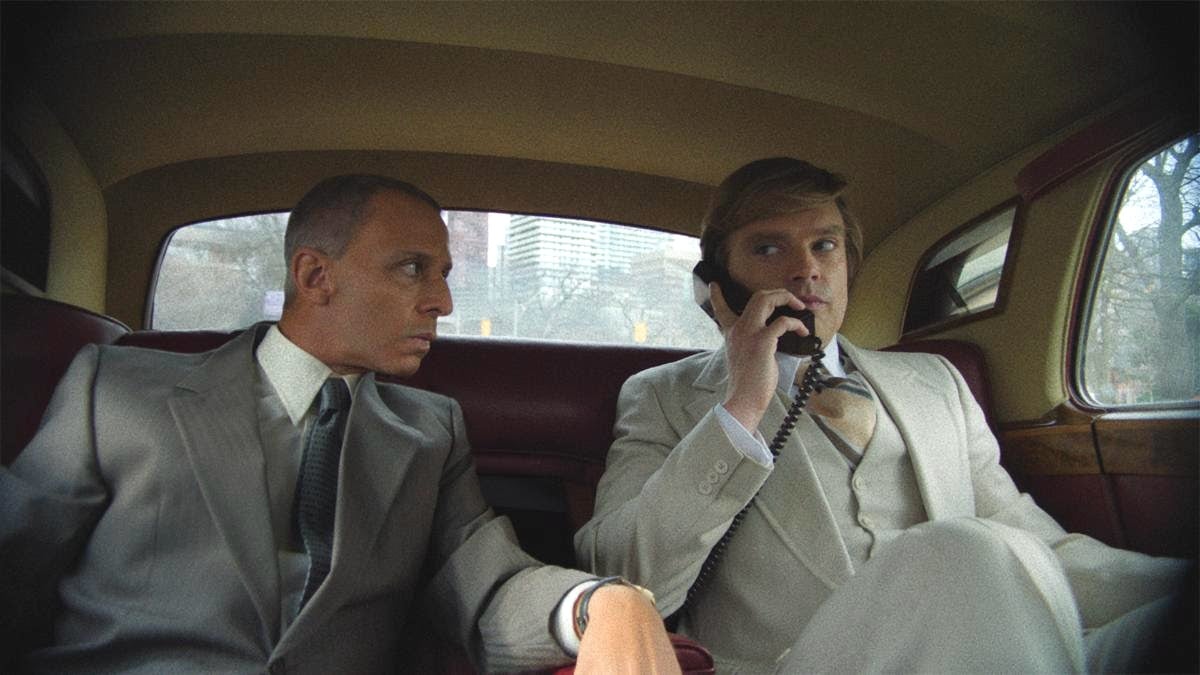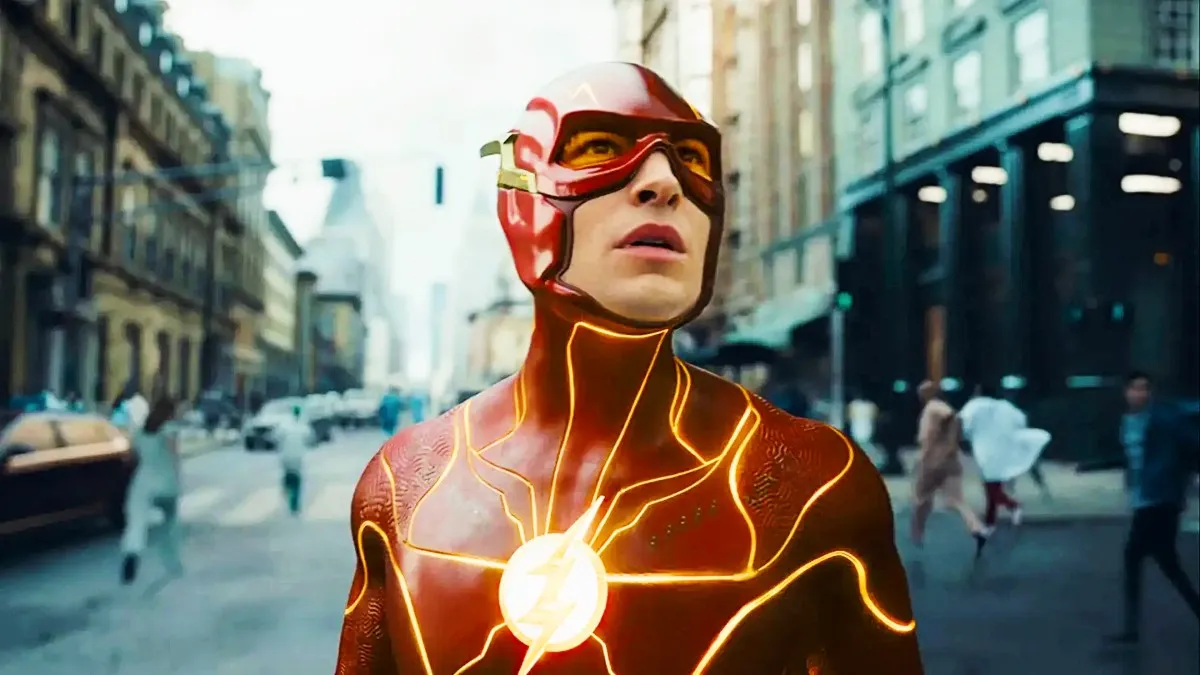You would think that with female-led films like Rogue One making bank and Ghostbusters: Answer the Call generating backlash that we must be making huge amounts of progress when it comes to gender parity in film. You’d be wrong.
When she went to see Rogue One, scientist Amber Thomas was excited. After all, Jyn Erso’s face was the largest one on the poster. Surely this film would be all about gender parity. And yet, what she didn’t notice until after she watched the film and looked at the poster again was that Jyn is surrounded by men and was often the only woman in any scene. As she writes over at Medium’s Free Code Camp blog:
It felt strangely familiar to have a lead female character be so outnumbered. Then I realized that Jyn and Princess Leia suffered the same inequality 39 years apart. I was overwhelmed with a need to know exactly how female representation in Star Wars movies has changed. But it seemed unfair to compare movies made today with movies made decades ago.
So she decided to look at the gender representation across 2016’s highest-grossing films worldwide: Captain America: Civil War, Finding Dory, Zootopia, The Jungle Book, The Secret Life of Pets, Batman V. Superman: Dawn of Justice, Rogue One: A Star Wars Story, Deadpool, Fantastic Beasts and Where to Find Them, and Suicide Squad.
Similar studies often look at both dialogue and screen time, but Thomas decided to focus exclusively on dialogue, which gave her “the ability to focus on characters with an active role in the story and to cut non-speaking characters from my analysis.” So what did she find?
Finding Dory and Zootopia fared the best when it came to individual dialogue from a female protagonist, with Dory speaking 4210 words throughout her film and Judy Hopps speaking 3114. Suicide Squad came in third with Amanda Waller speaking 1210 words. Meanwhile, Rogue One came in a distant fourth with Jyn Erso speaking 1045 words throughout the whole film (for comparison, Cassian spoke 1355 words, and it wasn’t even supposed to be his movie).
So how does this translate for these films when spread across all the female characters in the film?
- Finding Dory: 53% of the dialogue spoken by female characters
- Zootopia: 46% of the dialogue spoken by female characters
- Suicide Squad: 32% of the dialogue spoken by female characters
- Rogue One: a paltry 17% of the dialogue was spoken by female characters, most of it by Jyn herself.
So what does this teach us? That the only way we allow female characters to say lots of words is if they’re animated animals. Because that’s easier to buy than actual human women talking and moving the plot?
In Fantastic Beasts and Where to Find Them, female characters also had 32% of the dialogue, but those words were split among more women, with Tina and Queenie Goldstein having 930 and 403 words, respectively.
You can check out all the numbers in this animated infographic Thomas created. Bottom line? You can’t just create a female protagonist and call it a day, nor can you have a film with a protagonist of any gender and be satisfied with that protagonist being surrounded by mostly (if not entirely) men. That’s not the world in which we live. Even in “male-dominated fields,” those fields are still going to have some women in them who are vocal and active. Those women have female friends. *Gasp* Many men have female friends (that they’re not even trying to sleep with or anything!). People have wives, mothers, and sisters, as well as doctors, teachers, lawyers, and so on, any of whom could be female.
This isn’t about asking and expecting screenwriters to “be the change they want to see in the world.” It’s about expecting them to do the bare minimum of actually reflecting the world the way it is. Real women in the world say more and do more than we ever get to see on screen. It’s high time that changed.
(via Pajiba, image via Lucasfilm)
Want more stories like this? Become a subscriber and support the site!
—The Mary Sue has a strict comment policy that forbids, but is not limited to, personal insults toward anyone, hate speech, and trolling.—
Follow The Mary Sue on Twitter, Facebook, Tumblr, Pinterest, & Google+.









Published: Jan 16, 2017 01:55 pm